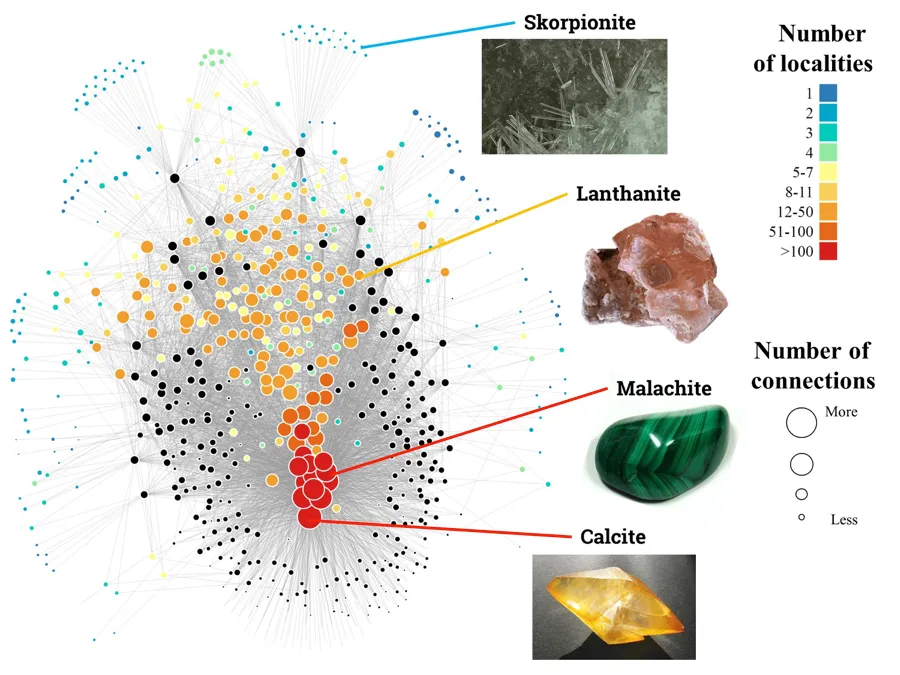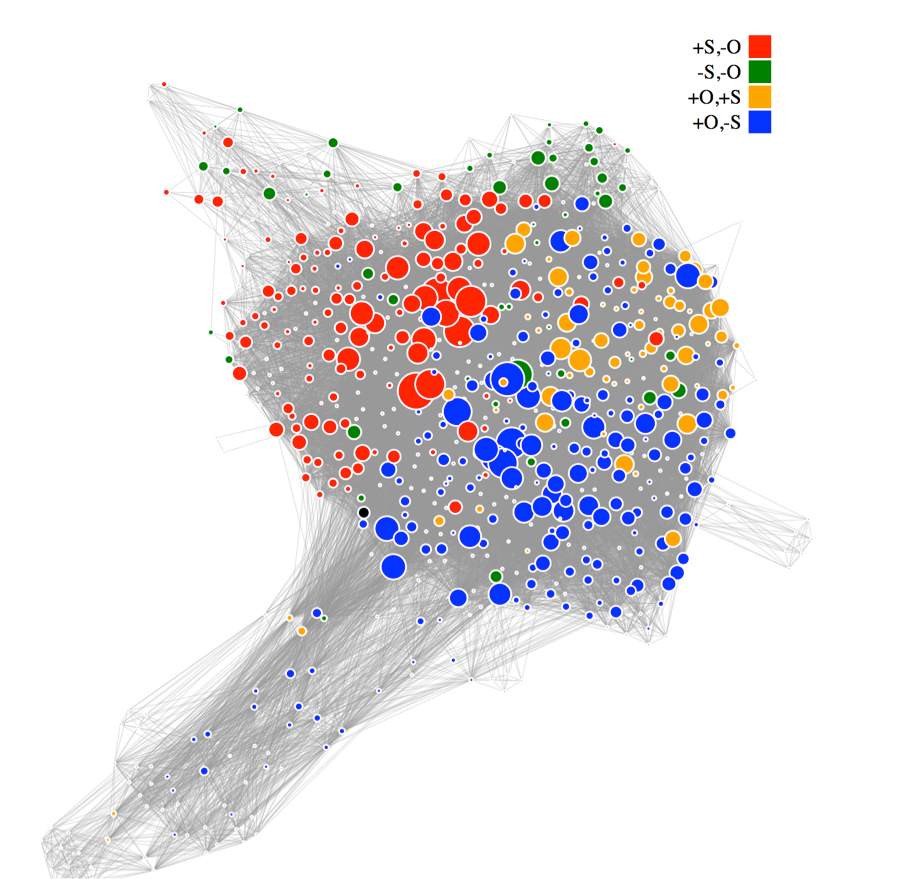Big Data (and You) Could Help Find 1,500 Undiscovered Minerals
Researchers are using new tools to predict where to find new minerals as well as to locate new sources of valuable resources like copper
/https://tf-cmsv2-smithsonianmag-media.s3.amazonaws.com/filer/ac/55/ac55eb81-f4ff-4015-a968-c5739b61fe47/parisitela__r130687__sample__photo__32127__m.jpg)
There are more than 5,000 known mineral species on earth, from the ubiquitous quartz to the tremendously rare fingerite, which exists only at the summit of the Izalco volcano in El Salvador. Mineralogists have long studied how and why minerals occur where they do. Now, they’re applying big data to the question.
The researchers are using network theory to understand the complex way different chemical, biological, physical and geographic parameters determine where minerals occur. Network theory – the idea that the relationships between things are governed by a set of mathematical rules – is often used to look at the spread of infectious diseases or to understand how human groups (for example, terrorism organizations) interact. Researchers are hoping it will help them discover new kinds of minerals, find troves of valuable resources like gold and copper, and better understand the way the earth was formed. A report on the work was just published in the journal American Mineralogist.
“We’re looking at mineral systems in a holistic way,” says Shaunna Morrison, who led the research along with Robert Hazen, executive director of the Deep Carbon Observatory, a network of scientists dedicated to better understanding carbon on earth. “We can explore the relationship and the feedback among many different parameters, and we can get a picture of what our planet is made of, and why. Once you start looking at how minerals occur on the earth’s surface, you see that they occur together for very specific reasons. You can see that in the networks very distinctly.”
For example, quartz and various species of feldspar commonly occur together (they're two of the main ingredients in granite) because they were created at different points in the same process, the crystalization of magma. A mineral 'species' is simply a mineral that can be distinguished from any other mineral by current methods.
The researchers are using databases of millions of mineral specimens from hundreds of thousands of places around the world. These databases contain information about minerals such as chemical composition, hardness, age, size of the deposit, and location where the mineral was found. They’ve combined this with data about surrounding geography and geological setting. The result is a series of models that can potentially reveal patterns that would otherwise be difficult to see. These patterns could give a picture of which minerals tend to occur together, and could show what geologic, chemical and physical properties exist where specific minerals are found.

This could make life much easier for mineralogists, who have historically done this type of work through slow, hard labor.
“For instance, Arizona has these copper mines, and [mineralogists] study the ways these copper minerals form in a very exhaustive fashion, doing mapping and chemical analysis, and spending thousands of hours studying these deposits in order to understand how they formed,” says Morrison, a postdoctoral researcher at the Carnegie Institution for Science. “When you finally understand how they formed, you can say, ‘OK, where else on earth could this have happened?’ Which means you need to have a great understanding of the geological history of earth. Then you go digging.”

Network theory may make it much quicker and easier to find the estimated 1,500 undiscovered species of minerals on earth, without doing nearly so much shoe leather research. By looking at the networks between known minerals, scientists may be able to fill in the gaps.
“We can potentially say, ‘OK, the next copper mineral will likely have this composition and will be found at this place on earth,’” Morrison says.
The researchers have already used the data analysis to predict 145 “missing” carbon-bearing (meaning they contain carbon) minerals, which should exist according to statistical models, but have not been discovered yet. This led to the creation of a citizen science project, the Carbon Mineral Challenge, which asks professional and amateur mineral collectors to help find these predicted minerals. Participants can find specimens in the wild, and are also asked to scour their collections for potential new discoveries. Ten new carbon-bearing minerals have been found so far.
The same principle could help mineralogists find new sources of valuable resources like gold, as well as rare minerals that may only exist in one or two places on earth. Most places have only a few minerals, while a few places – Russia’s Kola Peninsula, for example – are extremely abundant. The data could help show why places like the Kola Peninsula have such an inordinate number of minerals, and could predict other places on earth that might be similarly rich sources of various valuable minerals.
"I think this is great stuff," says Allen Glazner, a professor of geological sciences at the University of North Carolina at Chapel Hill, who was not involved in the research. "It reminds me of how chemists filled in the periodic table once they started to see the patterns. Even though they didn’t know how the patterns were governed by atomic structure, they were able to recognize patterns."
It’s hard to overestimate the importance of minerals to humans, Morrison says.
“Minerals essentially make up everything that we use in our society that’s not grown or pumped out of the ground, like water or oil,” she says. “Our buildings, our cars, basically everything we use on a daily basis, even our bones are all made of minerals.”
The patterns of how minerals occur could also help teach use something about plant and animal life on earth – and beyond. The distinctive patterns of mineral distribution on earth produced by the data analysis may be a “biosignature,” Morrison says. This means that the patterns of how minerals occur and cluster together may be influenced by the rise of plant and animal life, as biological life (such as the presence of microorganisms) is thought to affect minerals. Preliminary analysis of mineral distribution on the moon and Mars don’t show these distinctive patterns, says Morrison, who is a member of the NASA Mars Curiosity Rover team, identifying Martian minerals from X-ray diffraction data sent back to earth. But future analysis might. And data from other planets might as well.
“If we say this, that might be telling us that there was life at some point,” she says. “That could help us in planning space exploration. If we find there’s a planet that has this great mineral diversity than maybe that’s where we need to go.”
/https://tf-cmsv2-smithsonianmag-media.s3.amazonaws.com/accounts/headshot/matchar.png)
/https://tf-cmsv2-smithsonianmag-media.s3.amazonaws.com/accounts/headshot/matchar.png)